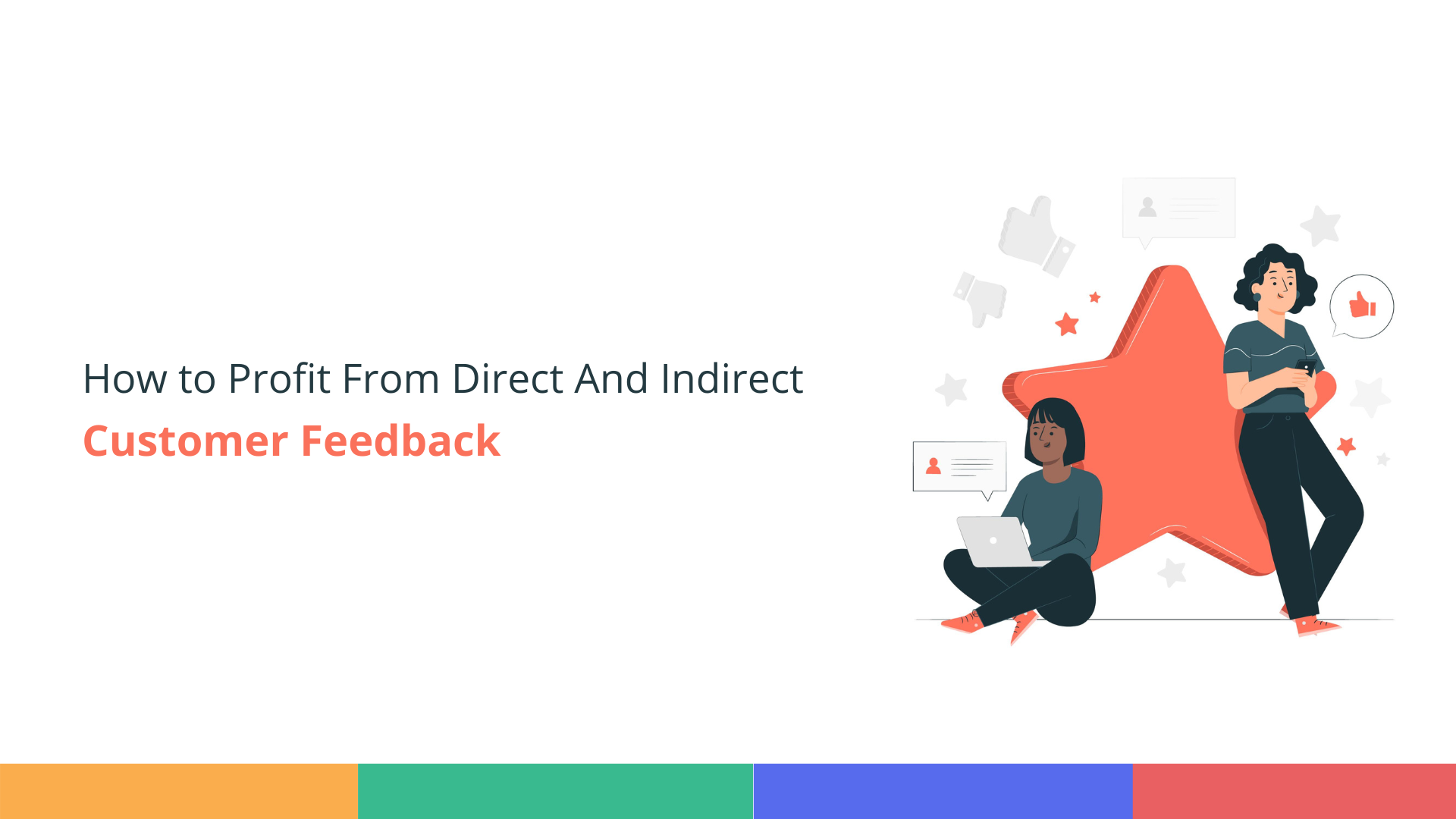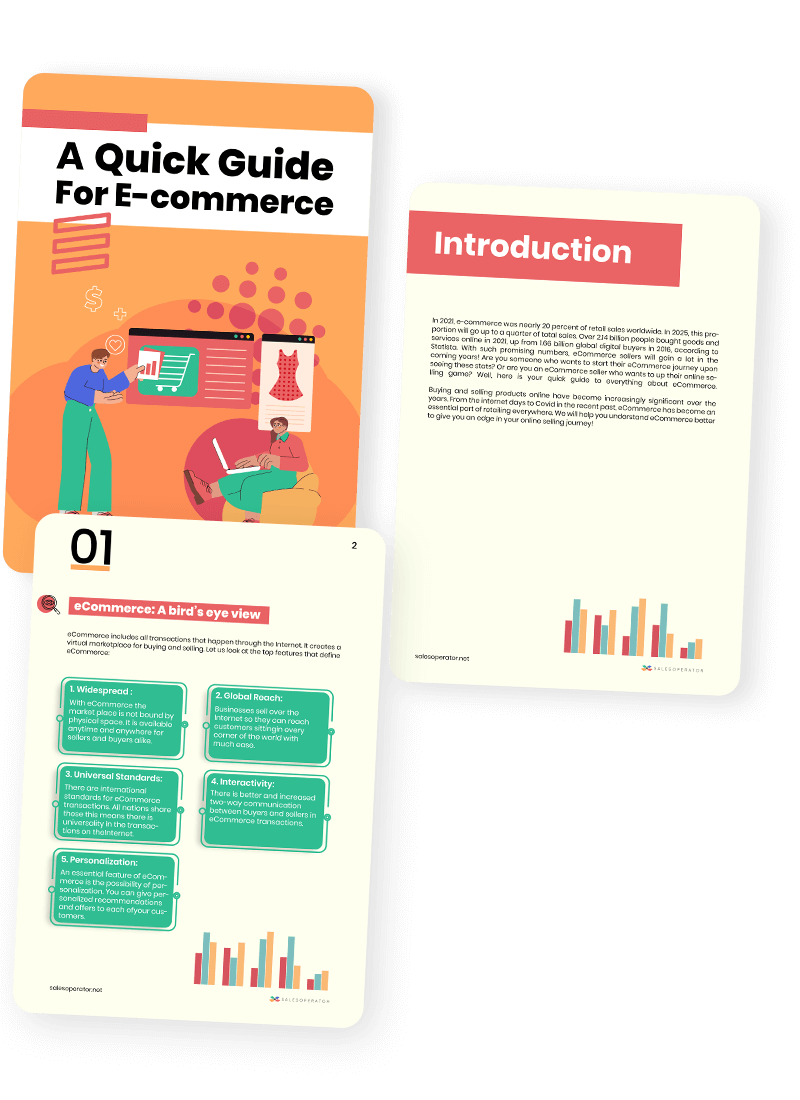In addition to quality products, pricing, and customer service; customer feedback also matters. After all, it’s the customers who foot the bills, so their voices should be given importance. Listening to your customers can actually fuel the growth of your business, especially in the world of e-commerce where you tend to hear more from unhappy customers through negative reviews and comments rather than the satisfied ones. It provides valuable insights into their wants and needs, helping you improve your products, which ultimately reflects in the form of positive reviews and increased sales figures.
But do you truly understand the importance of customer feedback? It’s much more than the opinions of your customers.
What is Customer Feedback?
In simple words, customer feedback is the valuable information, perspectives, challenges, and contributions shared by customers regarding what they feel about your product and company. It encompasses the valuable insights, opinions, concerns, and suggestions that your community shares based on their experiences with your company, products, or services. This feedback acts as a driving force for improving the customer experience and has the potential to bring about positive changes in any business, irrespective of whether it is positive or negative feedback.
However, not all feedback is the same. There can be both direct and indirect feedback. Direct feedback is commonplace and it needs no explanation. It can be feedback provided by customers on their own or through campaigns designed to get feedback via surveys, feedback forms, customer reviews, emails, phone calls, or in-person conversations. In the context of multichannel e-commerce operations, where sellers often operate with limited resources, it is common to encounter various operational challenges.
However, while running such operations, you typically have a degree of awareness regarding the issues at hand. This can come in the form of direct customer feedback, online reviews, social media mentions, or any other means. Addressing these issues on various platforms can make it a tedious task for sellers who may already be stretched thin with other operational responsibilities.
At the same time, tracking indirect customer feedback can be tricky. In the e-commerce business, it becomes all the more challenging as customers hardly bother to provide direct feedback. Most feedback is indirect and hidden, and you need to uncover it by analyzing their digital footprints as it can provide valuable insights into customer preferences, needs, and behaviors. By analyzing data such as purchase patterns, cart abandonment rate, website analytics, social media interactions, and online reviews, businesses can gain a deeper understanding of customers.
For example, examining customer transaction data, such as order history, average order value, and purchase frequency, can provide insights into customer preferences and buying patterns.
Firstly, evaluating data on customer order frequency and volume provides insights into customer loyalty and engagement. Higher order frequency or larger order volumes may indicate satisfied and loyal customers. On the other hand, declining or inconsistent ordering patterns can signal potential issues or a need for improved customer engagement strategies.
Based on the data obtained, you can dig deeper by reaching out to customers to understand the reasons behind the declining orders. And then, you should focus on addressing those specific issues or concerns.
You may also like: The Winning Formula: Strategically Engaging Your Target Group for Success.
Secondly, monitoring inventory turnover rates can also provide strong hints of customer feedback as it indirectly reflects customer demand and product popularity. Higher turnover rates for specific products suggest stronger customer interest and can guide decisions on stock replenishment or product assortment adjustments. You can easily track this using an inventory management system.
Thirdly, carefully analyzing returns and refunds provides insights into customer satisfaction and product quality. If the product return rates are higher, it may signal issues with product descriptions, images, or overall customer expectations. Sellers can identify reasons behind the pattern to improve productivity and reduce return rates.
You may also like The ‘Customer’: The Secret Sauce for Business Success!
Benefits From Customer Feedback
Customer feedback, regardless of whether it’s positive or negative, can play a vital role in improving products and fostering a customer-centric business approach. It can serve as a valuable source of insights, enabling you to understand customers’ needs and expectations better. A research study suggests that around 70% of customers are inclined to shop with brands that demonstrate a deep understanding of their requirements. It also acts as social proof, influencing potential customers to trust the brand and make purchasing decisions. It presents an opportunity for growth and improvement, revealing areas where the product or service may fall short, allowing businesses to address pain points and enhance the overall customer experience.
Below we have outlined a few benefits of customer feedback
- Improve products and services: Customer feedback provides valuable insights into areas where products or services can be enhanced. By listening to customer suggestions, identifying pain points, and addressing their needs, businesses can improve the overall quality and features of their offerings.
- Develop new products and services: Customer feedback can inspire innovation and guide the development of new products or services. By understanding customer preferences, identifying gaps in the market, and leveraging feedback, businesses can create offerings that align with customer demands and stand out from competitors.
- Enhance customer service: Feedback highlights areas where customer service can be improved. By listening to customer complaints, suggestions, and compliments, businesses can identify opportunities to enhance responsiveness, efficiency, and overall customer satisfaction. This leads to stronger relationships, repeat business, and positive word-of-mouth referrals.
- Optimize marketing campaigns: Customer feedback provides insights into what resonates with customers, their preferences, and motivations. This information can be used to fine-tune marketing campaigns, ensuring that messaging, promotions, and channels are aligned with customer expectations. This leads to more effective marketing efforts and increased customer engagement.
Build brand loyalty: Actively valuing customer feedback demonstrates a business’s commitment to customer opinions. Implementing suggested improvements, addressing concerns, and engaging customers in the feedback process fosters trust, loyalty, and advocacy, leading to repeat customers.
Here: Understanding the Customer Journey: Mapping Experiences for Success.
Closing Thoughts
Irrespective of your business’s industry, it is vital to gather and analyze customer feedback. Insights through analysis are more valuable than all the brainstorming you do internally to develop your business. Successful businesses recognize the significance of customer feedback and take them very seriously.




